

Matt Campbell
2025 Porsche 911 Carrera T review
6 Days Ago
The GR86 is a better front-engine, rear-drive sports car than its predecessor. But it could be a better driving experience, at least as a daily.
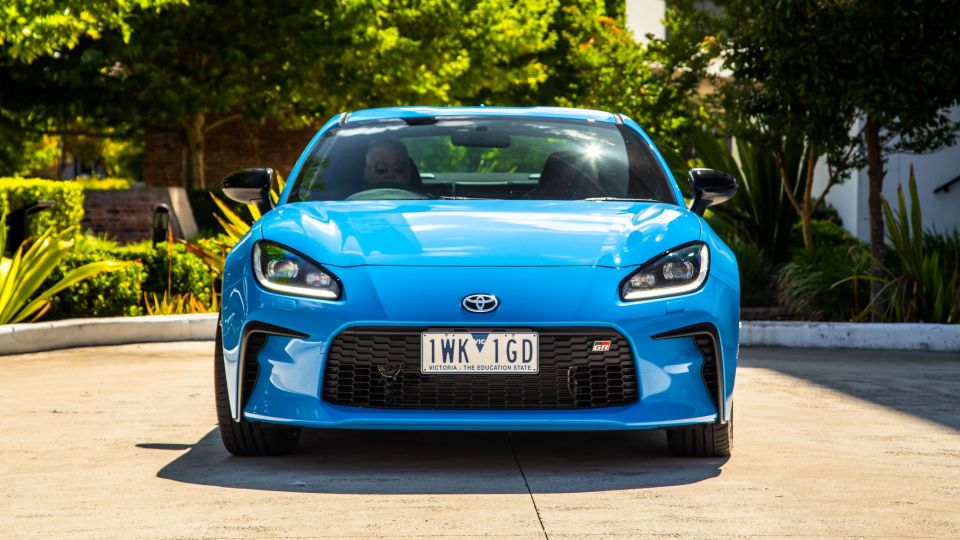


Quickly see how this car stacks up against its competition. Select any benchmark to see more details.
Where expert car reviews meet expert car buying – CarExpert gives you trusted advice, personalised service and real savings on your next new car.
As press launches go, you don’t always get enough wheel time or even adequate time to discover a car’s various nuisances that often only surface in daily-driver mode that might end up actually tipping you one way or the other when all things are considered.

That’s precisely my take on the second-generation Toyota GR86 after a second stint in one of the most affordable sports cars on the planet, despite copping a significant price hike when it lobbed here a few months ago.
As a front-engine, rear-wheel drive sports car, it’s a proper looker, and from any angle I might add.
This time round I’ve taken some time out to study the design from all angles, and there are no bad ones. The side profile is particularly tasty but then so is the rear three-quarter look.
Either way, the GR86 – in GTS guise specifically – is still the epitome of that classic front-engine, rear-wheel drive sports car.
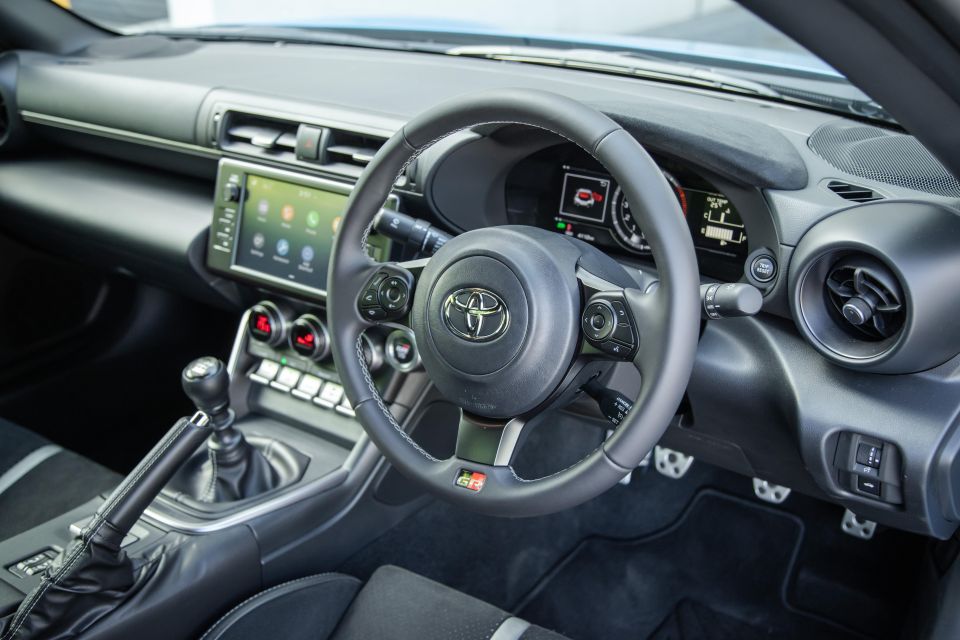
And, given everything from the weekly grocery shop to Sunday morning breakfast out has practically doubled in cost, it’s also still relatively attainable if you count the fact it can also accommodate small kids – just like a Porsche 911.
It’s not that I’ve lost any of my initial passion or enthusiasm for Toyota’s most affordable sports car here in Oz, but living with it as a daily driver and outside the confines of an all-out track attack and a spirited drive on some marvellously uncluttered roads in regional Victoria (that was the launch event), has exposed some less appealing characteristics.
There are four variants in the GR86 range kicking off with the GT manual priced from $43,240 plus on-roads, while the higher-specced GTS with manual transmission is priced from $45,390.
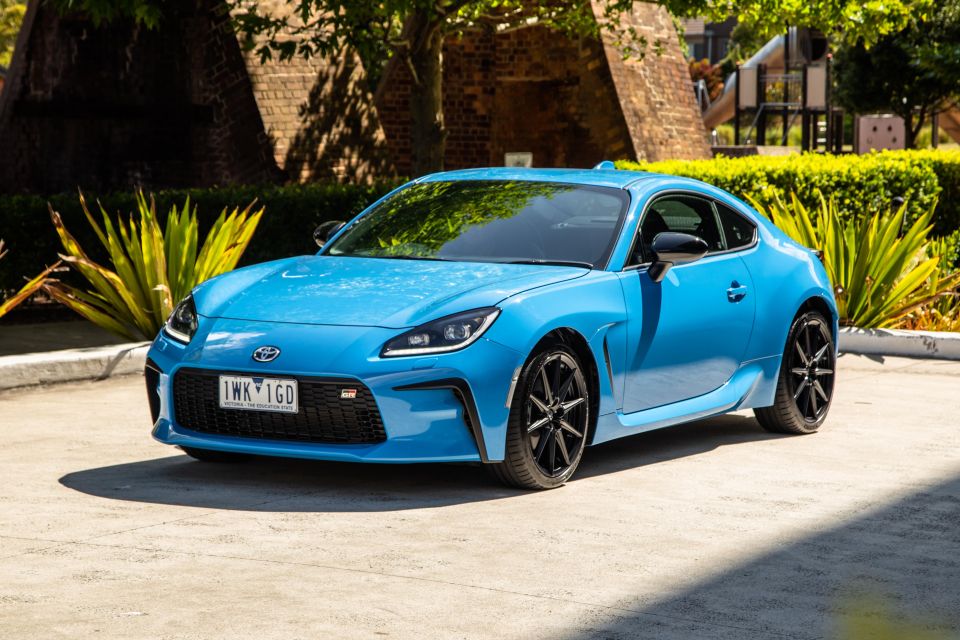
Auto versions start with the GT from $43,240, while the GTS with the same six-speed auto incurs no additional premium to its manual sibling at $45,390.
Close rival and almost identical Subaru BRZ undercuts the GR86 every step of the way, with prices commencing from $38,990 for the entry-level BRZ Coupe manual and climbing to $40,190 for the Coupe S manual. Automatic versions kick off with the Coupe from $42,790, and $43,990 for the Coupe S variant.
Despite the price hikes with these latest-generation versions, both the GR86 and BRZ still represent solid performance-car value if you compare pricing to performance-based hot-hatches such as the Hyundai i30 N Premium ($49,000) and Cupra Leon VZ from $52,990; though we recognise the additional practicality of the latter body style.
That said, you can buy an iconic Mazda MX-5 for as little as $36,090 for the entry-level Roadster with a 1.5-litre engine, or from $44,020 for the larger 2.0-litre variant.
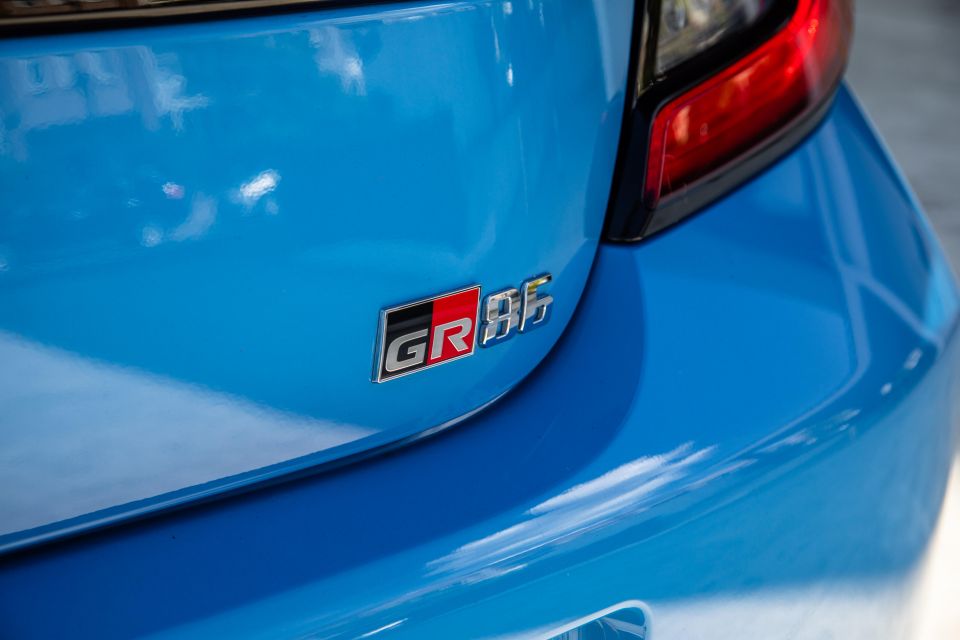
2023 Toyota GR86 pricing
Prices exclude on-road costs
Standard kit for 2023 is an all-new 8.0-inch touchscreen infotainment display replacing the old 7.0-inch unit, offering Apple CarPlay, Android Auto and DAB+ digital radio.
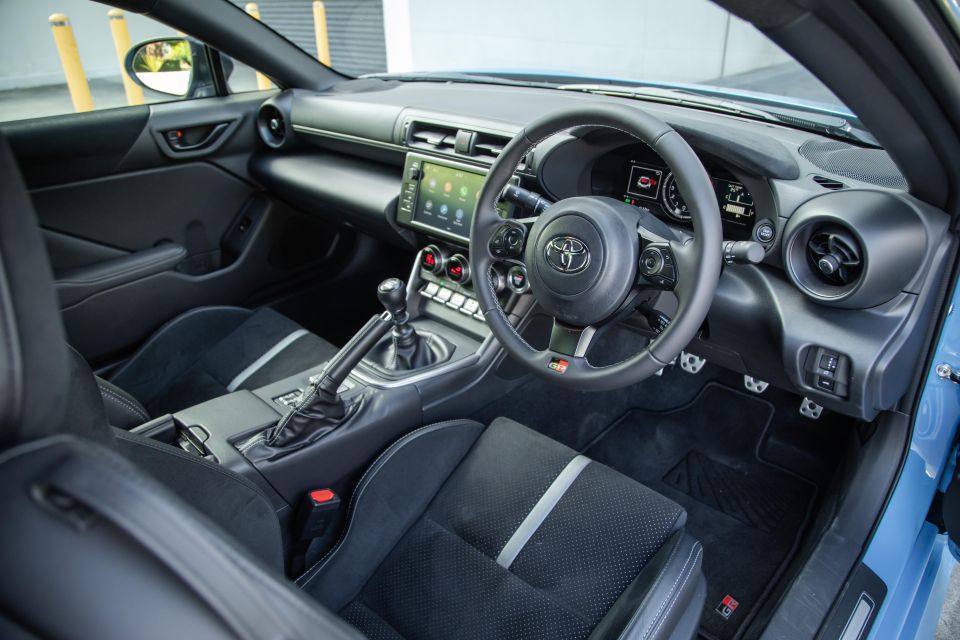
In an age of mega screens it might seem tiny as displays go, but it works well and suits the GR86’s close-knit cockpit.
It’s an intuitive interface and is quick to process inputs, as well as being robust. Thankfully, there’s still a few knobs and dials for easy access to volume and station tuning which makes life easier when you’re on the run.
It’s also paired with a 7.0-inch digital instrument gauge which is reconfigurable with Normal, Sport and Track drive modes, though deep colour reproduction isn’t one of its strong points.
Thankfully, the dual-zone climate control uses three large dials incorporating digital readouts, with a bank of rocker-style switches below controlling various other AC functions.
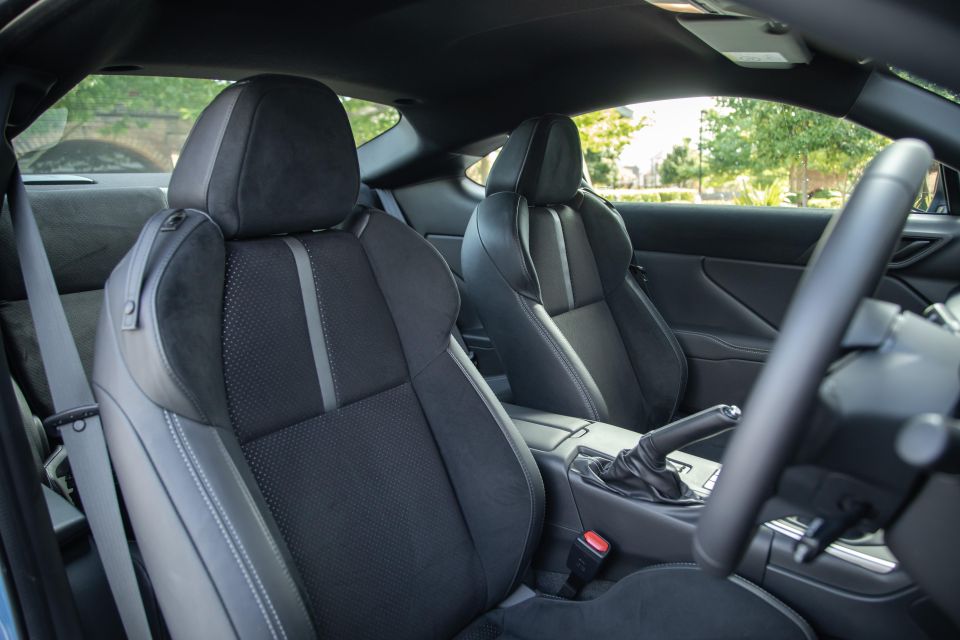


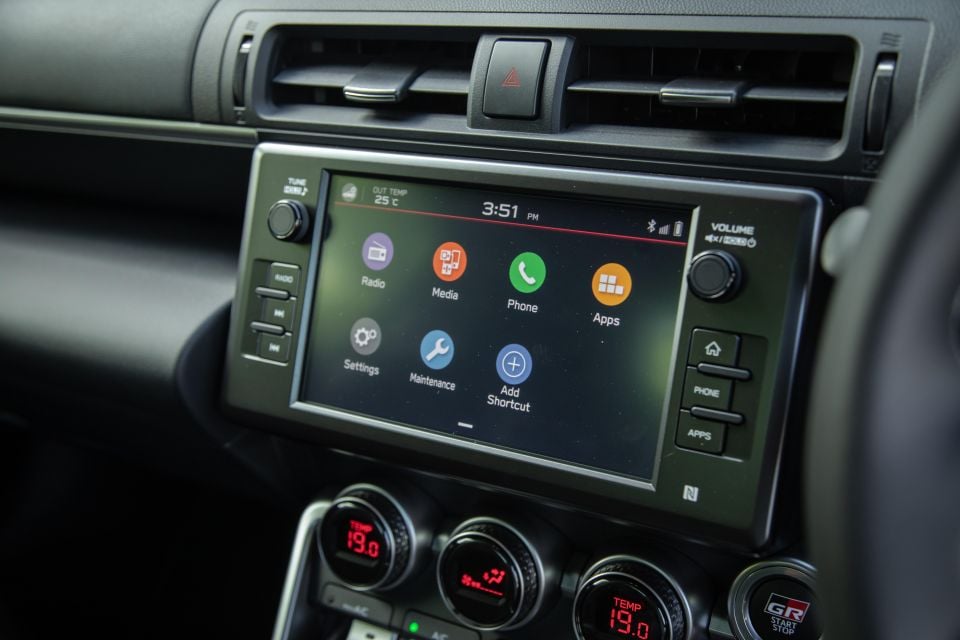
The low-slung driving position is superb, as are the properly bolstered seats that offer a lower hip point for reduced lateral movement and a lower centre of gravity. They’re now lighter by 1.5kg, but more comfortable thanks to new seat springs.
Toyota has shrunk the leather-wrapped steering wheel diameter slightly, with both tilt and reach adjustability.
I definitely prefer the comfort afforded by the more luxurious Ultrasuede/leather accented upholstery in the GTS spec, mainly for its extra body grip but also the visual aesthetics. And, if you’re intending to run track days in your GR86 – the suede seats are going to provide grippier and more secure upper-body support in the corners.
Aside from that, the design of the rear seats means more cushioning as well as better ingress and egress thanks to more thoughtful ergonomics via a new shoulder-mounted seat folding lever.
It’s a classic front engine, rear-wheel drive sports car, which means a snug fit in the cockpit, thanks to largely the same dimensions inside as the outgoing model.
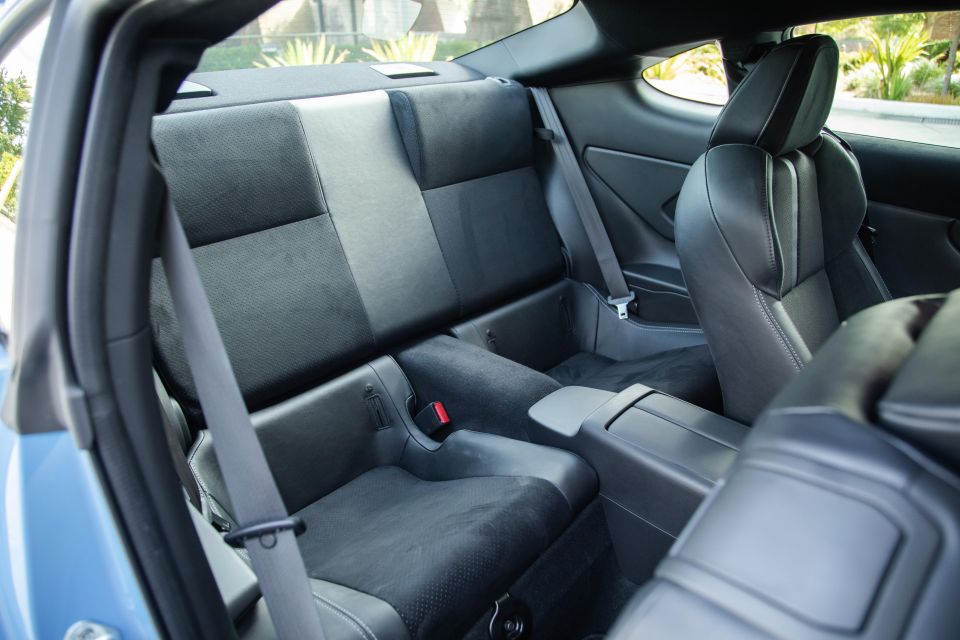
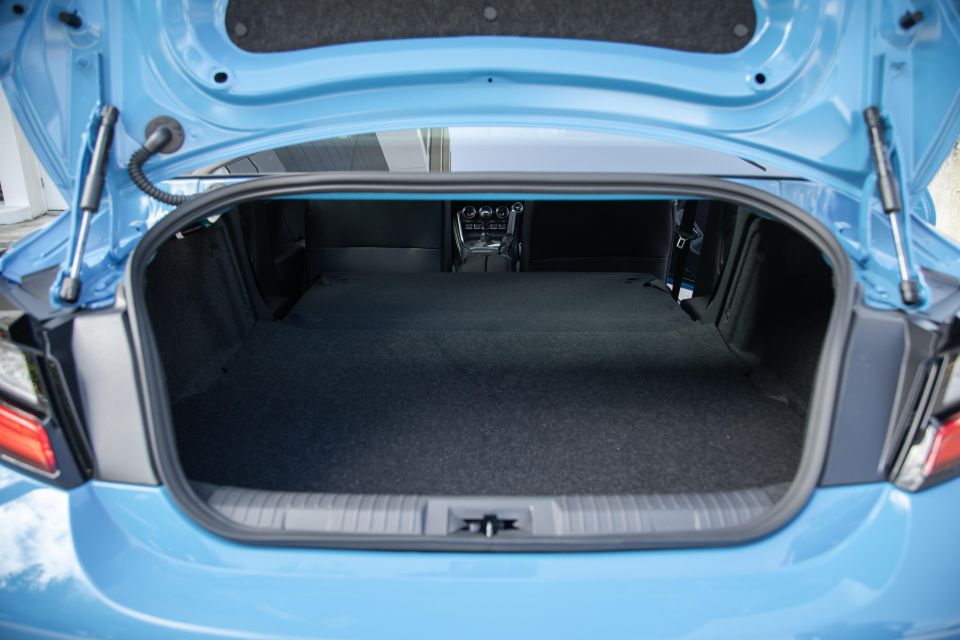
Being able to seat four people in the GR86 (and BRZ) is a big plus for those of us with kids (or suitably-sized pets), even if it is a tight squeeze back there, which it surely is. The seats and shoulder room is okay, but legroom is minimal.
Storage wise, there’s a more practical double-door centre console box with two USB ports and two cupholders, while the glovebox capacity has also been increased by 25 per cent.
However, boot space remains minimal at 237 litres, but Toyota’s press kit proudly boasts there’s enough space to haul four spare tyres in the luggage area with the rear seats folded – track-day warriors will no doubt be impressed, suffice to say, it seems larger than the numbers might suggest.
The latest GR86 gets a larger 2.4-litre naturally-aspirated horizontally-opposed four-cylinder petrol engine making 174kW of power at 7000rpm, and 250Nm of torque from 3700rpm – an improvement of 22kW and 38Nm over the 2.0-litre unit it replaces.
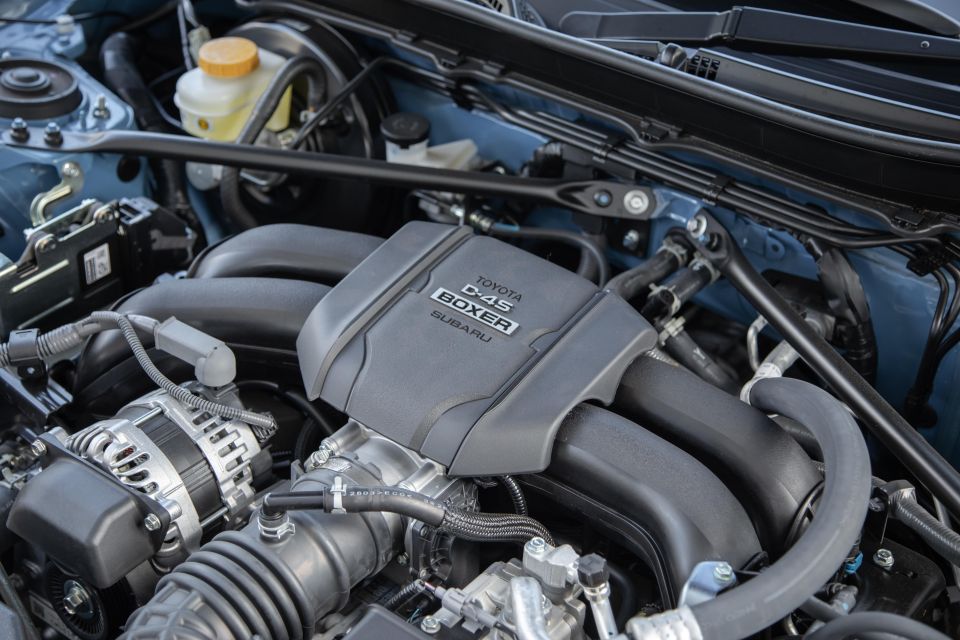
The extra grunt made by the larger engine delivers noticeably more performance, especially with the manual, which can dash from 0-100km/h in just 6.3 seconds (down from 7.6s). The GR86 auto needs 6.8 seconds for the same sprint, regardless of whether you get the GT or GTS as tested here.
Effectively, it’s a new engine with only the cylinder block and cylinder heads carried over from the original 2.0-litre unit, but with increased bore and inlet valve diameters for more immediate throttle response among other benefits.
Almost everything else has been enhanced, including a new, lightweight resin rocker cover that replaces the previous aluminium version. The upper section of the oil pan is new too, and features a stiffer cross section for enhanced rigidity.
The GR86 has a 50-litre fuel tank, and drinks 98 RON premium unleaded.
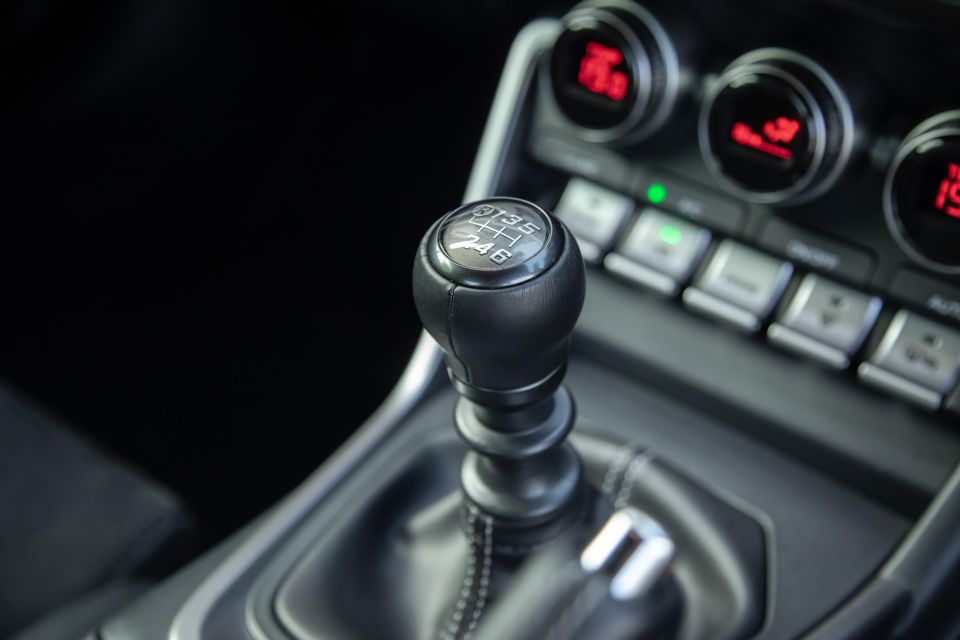
Claimed fuel economy:
Over our week of testing, we got 8.6L/100km, which given the driving conditions, was quite excellent.
Here’s the thing; when you’re on track going ten-tenths or beyond – as is often the case with motoring journos let loose on a world-class circuit like Victoria’s famed Phillip Island – you’ve either got the throttle or brake pedal pinned to the firewall and there’s not much of the in between.
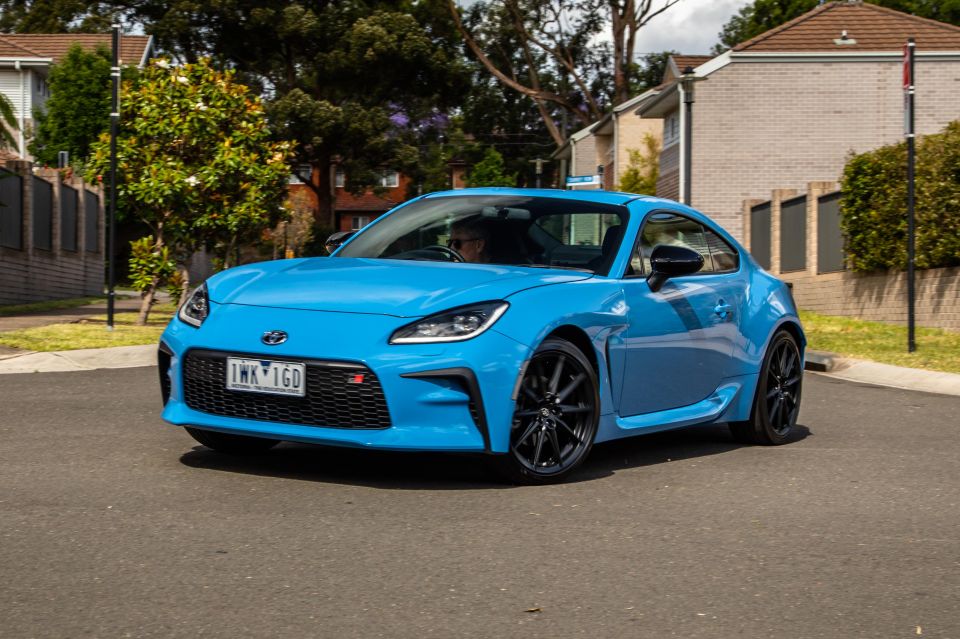
The same goes for a thoroughly spirited drive on decidedly uncluttered regional roads in these parts – where you’re often able to exploit the free-flowing nature of both the terrain and the additional grunt on tap from what is clearly a more responsive engine than the first-generation model.
It’s an entirely different scenario when you’re hamstrung by local roads, traffic and speed limits as are the limitations of the daily commute for so many of us.
Nevertheless, it’s still a thrill every time you walk out your front door and get an eyeful of what really is a great looking car (especially in Apollo Blue) before lowering yourself into the driver’s seat and tapping the start button.
But that’s almost where the thrill can start and end for this car in these conditions. For starters, there’s no intoxicating engine note on start-up as you get in the likes of a Hyundai i30 N or even a GR Yaris.
To me that’s a big miss and surely part of the fun package of owning a fully-fledged sports car, which is surely what the GR86 is.
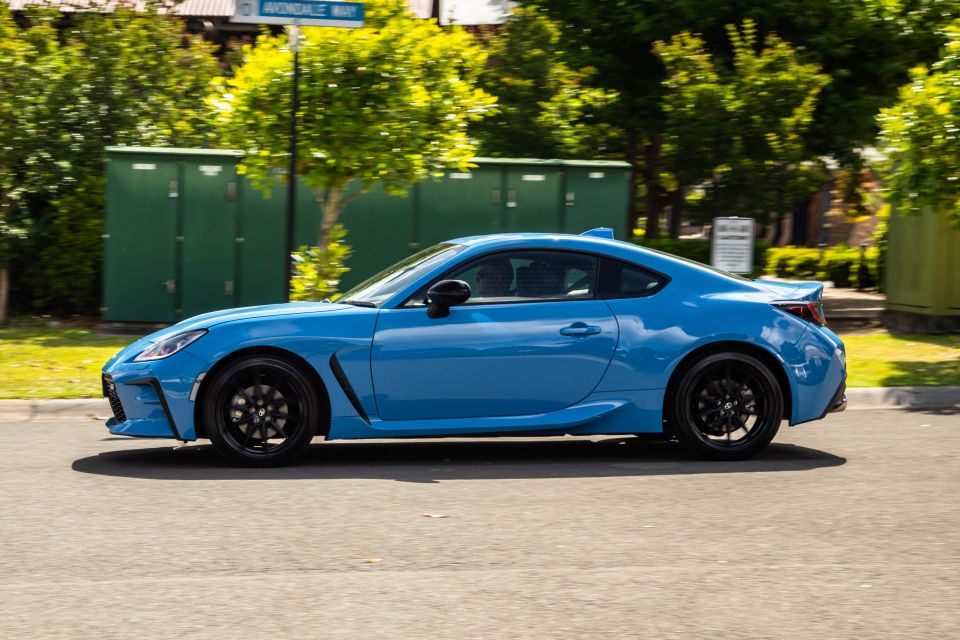
And it doesn’t get much better when you’re on the go, either. Okay, it’s slightly more rowdy than its predecessor, but there’s absolutely no authentic snarl to the engine note, at least from inside the cabin.
It’s slightly more captivating from outside the car, but it doesn’t excite like other four-pot performance cars do.
Moreover, it’s a difficult car to drive smoothly around the burbs, at least I found it that way, and god knows I tried a bunch of different driving styles in an attempt to row smoothly through the lower gear ratios.
It’s frustrating to say the least, and an issue that only really surfaced in low-speed traffic conditions. It’s not that the clutch take-up is overly late in the pedal travel, too light in the weighting department, or the gearbox to notchy. All of that is usually manageable – but not so with the GR86 GTS.
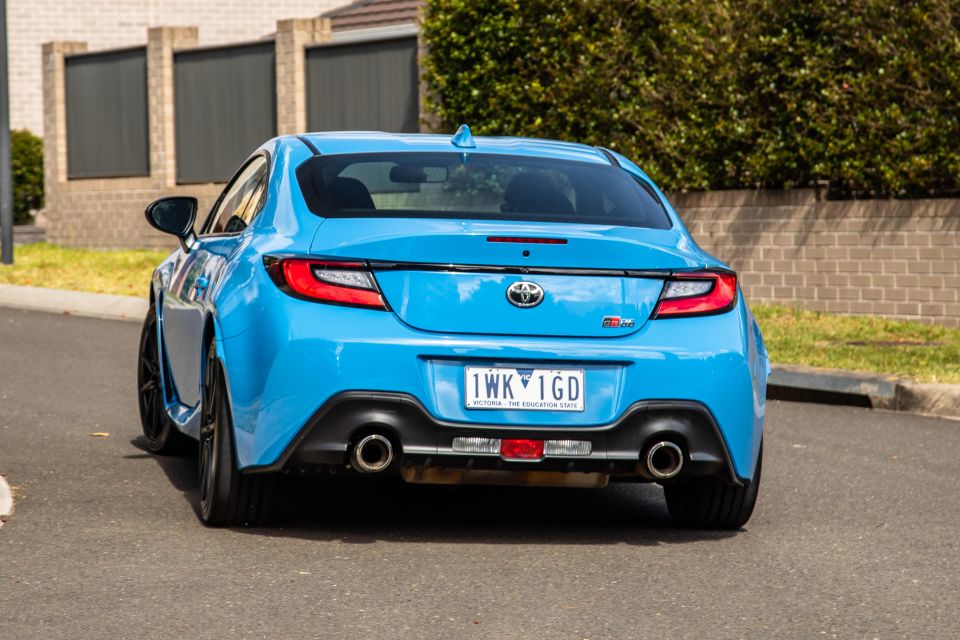
Selecting Track mode alleviates some of the issues with a sharper throttle response, but mostly it’s too manic for these low-speed conditions. It’s only when you hit some 80-90km/h speed zones do you actually benefit from higher engine speeds and marginally slicker shifts.
To make matters worse, Toyota has chosen not to add auto rev-matching between gearshifts. It’s an odd move given almost all performance manuals these days boast this auto-blipping feature. The only excuse we got from Toyota’s tech gurus at the launch event was that it wasn’t on the first-gen.
Don’t get me wrong, heel and toe shifting is one of life’s all-time great pleasures, and the GR86 could surely use this electronic assistance if you value silky-smooth shifting with each and every gearshift.
I really do think the driving experience would be far better for it, both on-and-off the track and again. Plus, it’s standard kit on the GR Yaris and upcoming GR Corolla.
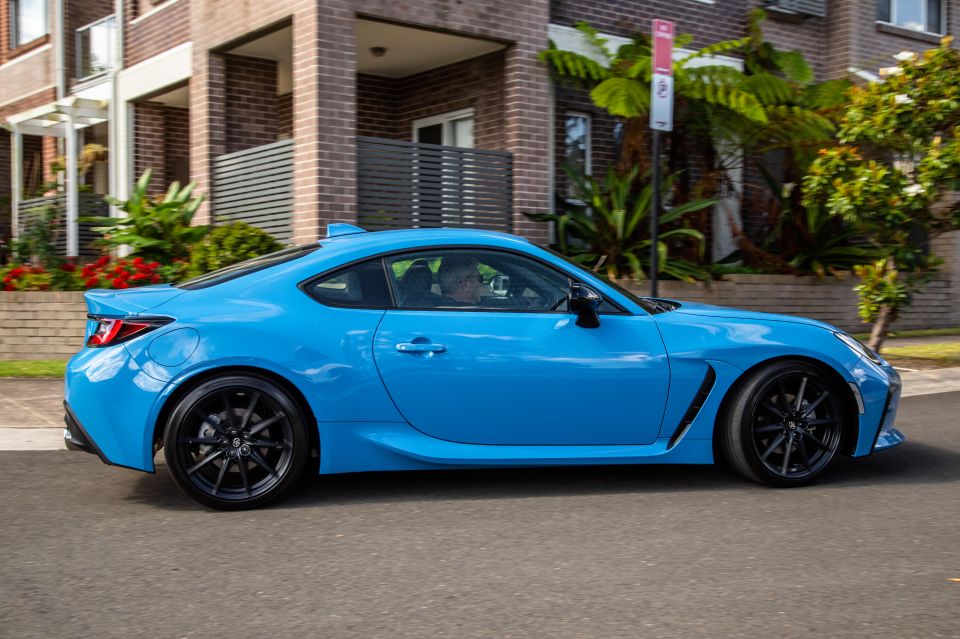
Where expert car reviews meet expert car buying – CarExpert gives you trusted advice, personalised service and real savings on your next new car.
The GR86’s suspension setup is understandably firm and in-line with its stiffer chassis, and that’s fine with a car like this.
I also like the fact there’s little, if any body roll through corners; even when you’re loading it up in your local hood. Put that down to the Michelin Pilot Sport 4 S tyres – they’re offer absolutely superb grip.
And while there are no issues with the brakes (they were upgraded on this new model), they still lack that initial bite and pedal feel you get on some rival makes and models.
Stopping power is otherwise fine, but you’ll need to apply some proper pressure at times. To me the braking should feel more sure-footed that what this car offers.
GR86 GT highlights:
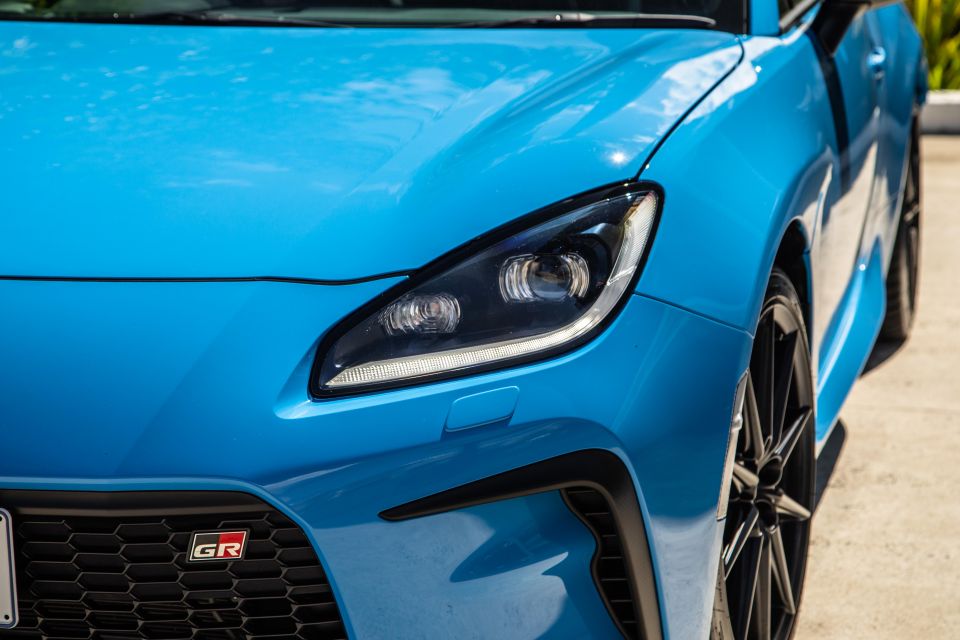

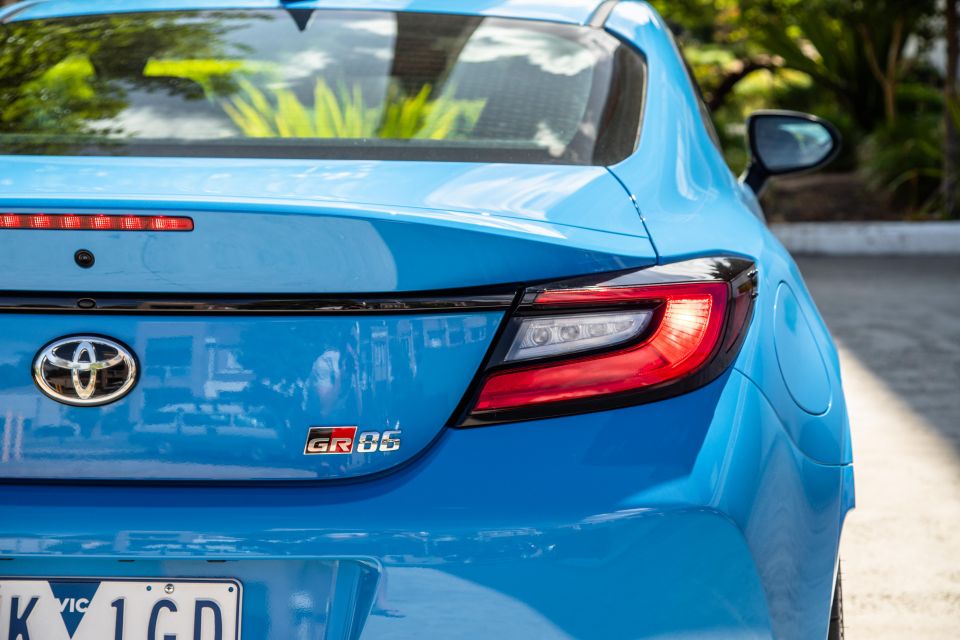



GR86 GTS adds:







Premium paints cost $550 – i.e. all colours except Storm Black
The Toyota GR86 nor its Subaru BRZ twin have yet to be been crash tested by ANCAP or Euro NCAP, and therefore remain unrated.
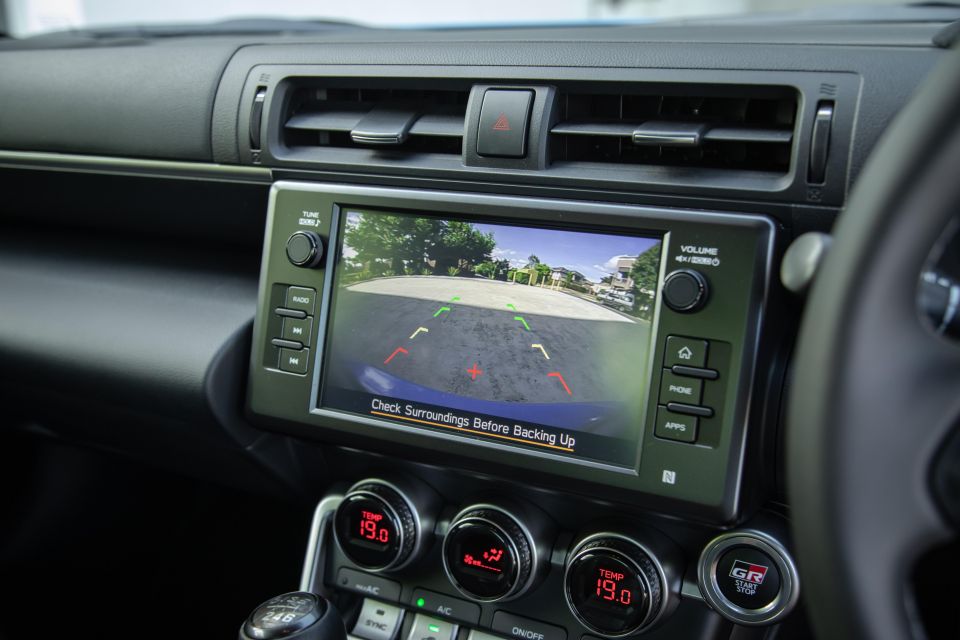
Disappointingly, the GR86 GT manual doesn’t feature any active safety or driver assistance systems, however, opting for the GT automatic gets you a more generous safety suite.
Standard safety features (auto) include:
GR86 GTS adds:
The entire GR86 line-up is covered by Toyota’s five-year, unlimited-kilometre warranty, extending to seven years on the engine and driveline if you stick to the manufacturer’s service schedule within the dealer network.
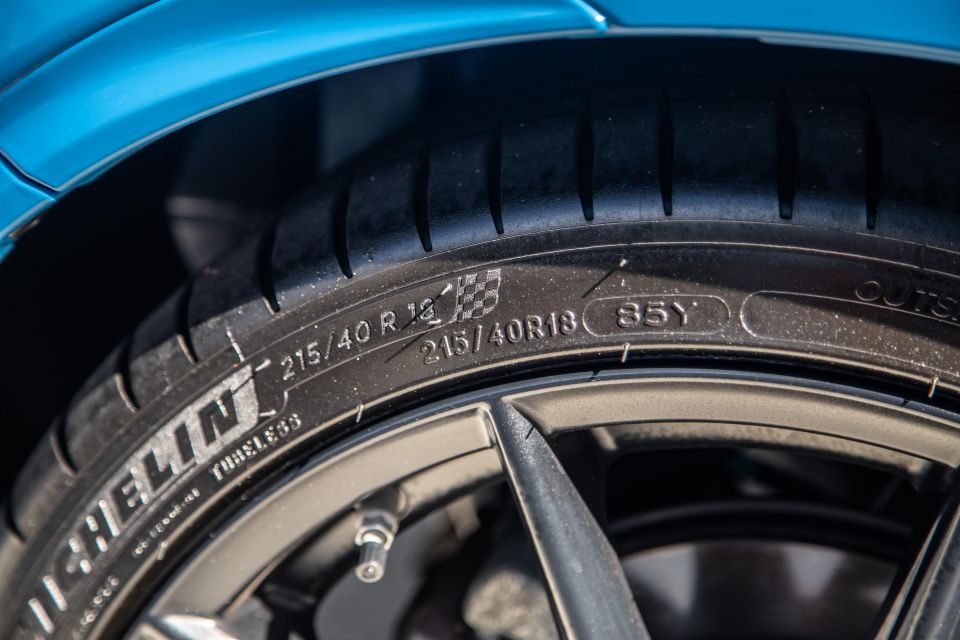
Service intervals are 12-months or 15,000km – whichever comes first.
Capped-price servicing for the first five years/75,000km costs $280 a visit, which is reasonable by any standards.
In the end, the GR86 is still a great looking car and a demonstrably better front-engine, rear-drive sports car than its predecessor ever was.

But it could be a better driving experience, at least as a daily.
There’s plenty of useful feedback in keeping with a spirited Sunday pedal on your favourite road, but it’s missing the kind of emotional involvement and excitement you get from most hot hatches these days.
It’s a pretty easy fix for Toyota or the aftermarket wizards.

Click the images for the full gallery
MORE: Everything Toyota GR86
Where expert car reviews meet expert car buying – CarExpert gives you trusted advice, personalised service and real savings on your next new car.


Matt Campbell
6 Days Ago


James Wong
5 Days Ago


Max Davies
3 Days Ago


Josh Nevett
3 Days Ago


Josh Nevett
2 Days Ago


Paul Maric
23 Hours Ago